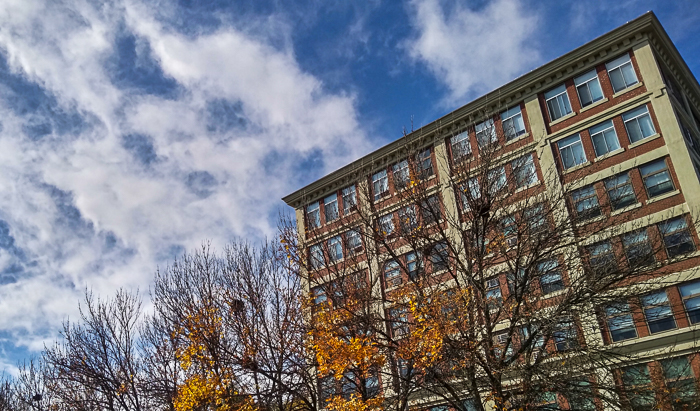A Home Safe from COVID

An open letter to tenants & other stakeholders in housing
In many communities the number of COVID-19 infections and deaths is on the rise. This increases the risk of spread to and within housing.
Those of us who live and work in housing for elderly and disabled, including public and subsidized housing for elderly and disabled, as well as nursing homes, assisted living, rest homes, market rate, and affordable housing are at an elevated risk of serious impacts and even death from COVID-19. Our best protection is to avoid infection.
We know how to protect ourselves. And to be effective, everyone in the housing community must be part of the solution. The new activities that protect us take continuing effort, positive reinforcement, and sometimes sanctions, to become ingrained habits.
We can help each other to avoid infection
There are several modes of transmission, however airborne droplets and aerosols pose the greatest threat. Indirect transmission by surfaces is another mode.
It’s simple
Avoid the droplets and aerosols from everyone, because anyone could be infected. And avoid transferring virus particles from contaminated surfaces.
Here’s how
-
Wear masks to stop airborne virus;
-
use distance from others to avoid airborne virus;
-
avoid congregating indoors;
-
clean and disinfect surfaces;
-
wash hands and/or use hand sanitizer;
-
beware of shared indoor spaces, like elevators, mailrooms, and laundry rooms that can harbor airborne virus.
Wearing a mask is a simple way to reduce catching or spreading COVID-19.
Dr. Anthony Fauci, director of the National Institute of Allergy and Infectious Diseases, said it is a “great idea” for there to be a uniform mask mandate. “But if everyone agrees that this is something that’s important and they mandated it and everybody pulls together and say, ‘We’re going to mandate it but let’s just do it,' I think that it would be a great idea to have everybody do it uniformly.” Fauci interviewed on CNN, report by Lauren Booker in Boston Globe
The keys to personal protection
-
Wear a mask that covers nose and mouth in all parts of the property, indoors and out, whenever out of one's apartment.
-
Maintain a distance of at least 6 feet from others.
-
Wash and sanitize your hands frequently.
-
Do not congregate indoors for longer than a few minutes a day.
-
Even an apparently health person may be infected and spreading the virus; your friends are not immune!
The keys to community protection
-
Availability of personal protective equipment (PPE), especially effective masks
-
Availability of hand sanitizer
-
Frequent cleaning and sanitizing of high-touch surfaces in all common areas (door handles, railings and banisters, elevator buttons, etc.)
-
Control of visitors
-
Have a plan for action when COVID is present; collaboration and transparency
Testing
Testing is an important tool to help locate infections and to trigger enhanced protections.
“Without testing, there’s no way of knowing how many people have the virus,” said Michael Kane, executive director of the National Alliance of HUD Tenants. “Our concern is that there could be a transmission danger similar to what’s going on in nursing homes or assisted living.”
-
Frequent testing for COVID for all members of the housing community with rapid turnaround and reporting to all those tested.
-
Transparent information and knowledge, not rumor, about the presence/absence of COVID in the facility. We need to know if there are infections, and without identifying the infected person(s) publicly.
Government fails to provide timely information
We need reliable information based on testing and collection of data on COVID-related illness and death. Surveillance is a keystone of public health.
A recently passed law Acts (2020) Chapter 93, https://malegislature.gov/Laws/SessionLaws/Acts/2020/Chapter93 was designed to collect and make available data on infections and deaths due to COVID in “elder facilities.” Instead of fixing defects of that law as it applies to public, subsidized, market rate, and affordable housing, the Governor, the Department of Public Health, many advocacy groups, and some in the legislature are working to ignore and cancel the provisions that are the only legislative effort to protect elderly and disabled tenants through effective public health methods.
Surveillance information, however imperfect it may be, is available; the Department of Public Health has it but won’t publish it. If we but collect, analyze, and distribute existing surveillance information in a timely way, landlords, staff, and tenants can mobilize to protect their community. Public health officials can educate, and if necessary, crack down on landlords and tenants who fail to follow the protocols for protection. We must eliminate the legislative and administrative barriers to our use of every possible method to carry out ongoing surveillance.
The lack of timely, site-specific information coupled with resistance and barriers to gathering and distributing this information, demonstrates a callous disregard for the health and well-being of staff and tenants alike in subsidized housing for elderly and disabled, as well as market rate and affordable housing. The lack of such information creates rumor and chaos and delays effective public health response to prevent further infection.
Emerging problems
At present, we have several problems in our buildings, including apartment buildings in urban centers, that can lead to the rapid spread of infection. Similar situations are reported from both public and subsidized housing, and in other multifamily housing developments. In market rate housing, where elderly and disabled can live using subsidy vouchers, there can be highly diverse populations including, for example, college students. Such a mixture of populations can increase the chance of introducing COVID from the surrounding community.
Risky behavior threatens safety
-
People routinely congregate without masks or distancing, although outdoors;
-
People congregate, without masking or distancing, in the lobby
-
People use the elevator, individually and in groups, without masking. The elevator, although it does have a fan, is an enclosed space with relatively poor ventilation, and has the potential to retain an infected aerosol for hours.
-
In some housing developments, there are already reports and rumors of tenants with COVID-19 infections. The lack of solid information leads to rumor and panic, and the lack of an emergency response plan triggered by case reporting can lead to chaos, extensive infection, and tragedy.
What can we do?
So much of the path to safety consists of factors and habits that will respond to a combination of education and enforcement.
Any of us can get the process started.
Leadership must include management, and can be most effective if tenants are engaged. The local health department and many other community resources can be drawn in to a shared effort. We can be assured of success only if we work together with trust and collaboration. But we also need to sanction any landlord or person who will not follow the protocols, because they pose a danger to everyone else.
What should the Commonwealth do?
- Provide regular, free on-site testing in all elderly/disabled housing complexes and assisted living facilities statewide.
- A commitment by the state to provide PPE distribution in all public and subsidized housing developments.
- A commitment by the state that all elderly and disabled SNAP recipients in Massachusetts will have genuine access to home grocery delivery. At present, Massachusetts has joined a federal pilot program allowing this to happen, but almost no grocery stores are enrolled—the state needs to take action to get more branches signed up.
- A commitment to expanded production of accessible and adaptable housing, and of Masshealth dollars to support individuals moving from nursing homes and other congregate facilities into community settings where they will be safer.
Together, we can reduce the threat of harm, illness, and death from COVID-19.
We must work together to mitigate—to reduce the harm, illness and deaths—that COVID-19 threatens to bring to our housing community. Our success depends on a coordinated effort where everyone works together: landlord/housing authority, management, custodians, social workers, and tenants.
The latest science and the best practices. Working Together Against COVID-19 in Multifamily Housing
We must work together as a community to protect each of us. Gossip, bullying, and mobbing divide as and eliminate trust. Gossip & Bullying in the Time of COVID
Let's get started! We can do this together.
Sincerely,
/signed/
Jerry Halberstadt, Coordinator, Stop Bullying Coalition, Tenant in HUD-subsidized housing
Bonny Zeh, Co-founder, Stop Bullying Coalition, Tenant in Somerville HUD-subsidized
Lori Bermani, Tenant in Salem Public Housing
Kathleen Burke, Tenant in Salem Public Housing, leader of the former city-wide tenants association in Salem
Colin Killick, Executive Director, Disability Policy Consortium (dpcma.org)
- Log in to post comments
